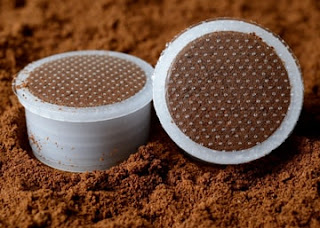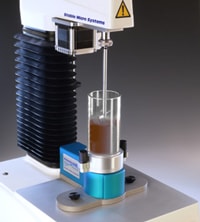Coffee is one of the most traded agricultural commodities in the world. According to Statista, revenue in the coffee market worldwide in 2020 amounts to USD 44.8 billion, and is expected to rise by 5% each year up to 2025.
It reaches the consumer in many different forms, from a creamy latte in a hipster coffee shop to a more basic instant. The three main forms that reach the supermarket shelf, however, are whole beans, ground and instant granules. This blog post covers the Texture Analysis techniques used by manufacturers in search of a perfect brew.
Instant
Instant coffee comes in both granular and powdered forms. Although the flavour will never quite match that of a traditional coffee, it has some distinct advantages. Compared to beans and ground, it is quick and clean to prepare (no grounds to clear up), has a reduced shipping weight and volume and a long shelf life.
Consumer demands for healthy, functional foods are growing rapidly nowadays. Coffee represents an interesting aspect for enrichment, since it is consumed by millions of people on a daily basis. A study published at the University of Zagreb on this topic was based on this idea. The aim of this study was to formulate enriched instant coffee powders with the purpose of estimating the influence of storage time, functional ingredients and packaging material on physical and sensory properties of the mixtures.
The Powder Flow Analyser can be used to measure caking and speed flow dependency properties of instant coffee, too; it is an instrument welcomed by all sectors of the food industry, as it allows accurate and objective testing of ingredients, blends and finished products. It helps manufacturers to avoid typical problems such as batch and source variation of ingredients, caking during storage, bridging in hoppers and sticking during production.
New methods for producing instant coffee formulations are constantly being researched. In a patent released by Symrise, a new method was specified for creating spray dried agglomerations with a larger particle size and no dust, which are stable and able to hold active ingredients and flavourings. Instant coffee was specified as an example for this method, and a Powder Flow Analyser used to measure flowability on a scale defined by the author.
In a variation from testing instant coffee alone, a research group in Croatia used their Powder Flow Analyser to measure the physical properties of cappuccino powder during storage. In cappuccino powder, coffee powder is mixed with sugar, milk powder and different emulsifiers and anti-caking agents. In this study, samples were stored for 4 months, with powder flow analysis carried out each month. A positive correlation was determined between cohesion index and cake strength –- a rise in the cohesion index also caused a rise in cake strength.
Researchers from Washington State University used a different approach to measure the properties of instant coffee. Compression tests have been proven not only to be useful tools in characterising attrition, but also excellent descriptors for powder flowability. The purpose of this work was to study the effects of particle size and water activity on the compression characteristics of agglomerated food powders, including instant coffee.
Each sample was placed in a cylindrical compression cell and compressed using a TA.XT2 Texture Analyser and cylindrical probe. Particle size was found to play a significant role in compression tests in that the greater the particle size, the greater the volume reduction. It was easier to compress the low water activity samples, but in all tests changing water activity did not significantly affect compression characteristics.
Ground
A study released by Erciyes University focussed on the flow properties of powdered coffees regarding their roasting degree (light and dark roasted) and particle sizes.
Since caking of particle-based foods is highly undesirable due to the stoppage problems during the filling operation in process, and when it reaches the customer, determination of the flow properties of coffee were very important to this study, and the factors affecting the flow properties were considered in detail.
They used their Powder Flow Analyser to characterise the flow behaviour of their coffee samples, gathering cohesion, caking and powder flow speed dependency (PFSD) data. Results indicated that caking was not the case for medium and coarse coffee samples, yet fine ground samples were prone to caking. Among the samples, only light coffee with a larger particle size was flow stable.
Beans
A study carried out at the University of Udine investigated this effect.
The aim of this paper is to evaluate the factors—such as density and moisture—affecting the mechanical properties of coffee beans roasted at 170, 200°C and under so-called high yield conditions. To distinguish the effects due to roasting (where both density and moisture changes occur) from those due to the water removal alone, heat treatments on coffee bean samples at dehydration temperatures (90–105°C) were also carried out.
Individual beans were tested under compression, and breaking force, strain at fracture and work to fracture measured from the force-distance graph. Results showed that the typical brittleness of roasted and high yield coffee beans was related to water loss, the change of tissue structure and to the decrease of density.
There is a Texture Analysis test for virtually any physical property. Contact Stable Micro Systems today to learn more about our full range of solutions.
For more information on how to measure texture, please visit the Texture Analysis Properties section on our website.
 The TA.XTplus texture analyser is part of a family of texture analysis instruments
and equipment from Stable Micro Systems. An extensive portfolio of
specialist attachments is available to measure and analyse the textural properties of a huge range of food products. Our technical experts can also custom design instrument fixtures according to individual specifications.
The TA.XTplus texture analyser is part of a family of texture analysis instruments
and equipment from Stable Micro Systems. An extensive portfolio of
specialist attachments is available to measure and analyse the textural properties of a huge range of food products. Our technical experts can also custom design instrument fixtures according to individual specifications.
No-one understands texture analysis like we do!
To discuss your specific test requirements click here...
For more information on how to measure texture, please visit the Texture Analysis Properties section on our website.
 The TA.XTplus texture analyser is part of a family of texture analysis instruments
and equipment from Stable Micro Systems. An extensive portfolio of
specialist attachments is available to measure and analyse the textural properties of a huge range of food products. Our technical experts can also custom design instrument fixtures according to individual specifications.
The TA.XTplus texture analyser is part of a family of texture analysis instruments
and equipment from Stable Micro Systems. An extensive portfolio of
specialist attachments is available to measure and analyse the textural properties of a huge range of food products. Our technical experts can also custom design instrument fixtures according to individual specifications.No-one understands texture analysis like we do!
To discuss your specific test requirements click here...






No comments:
Post a Comment